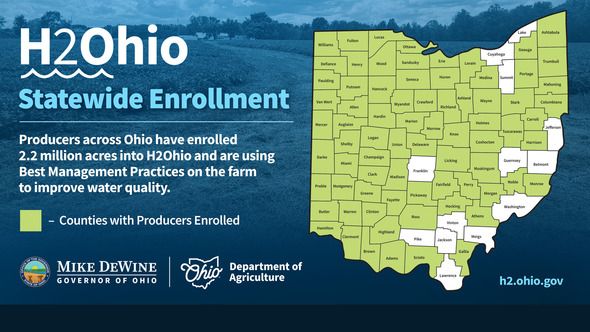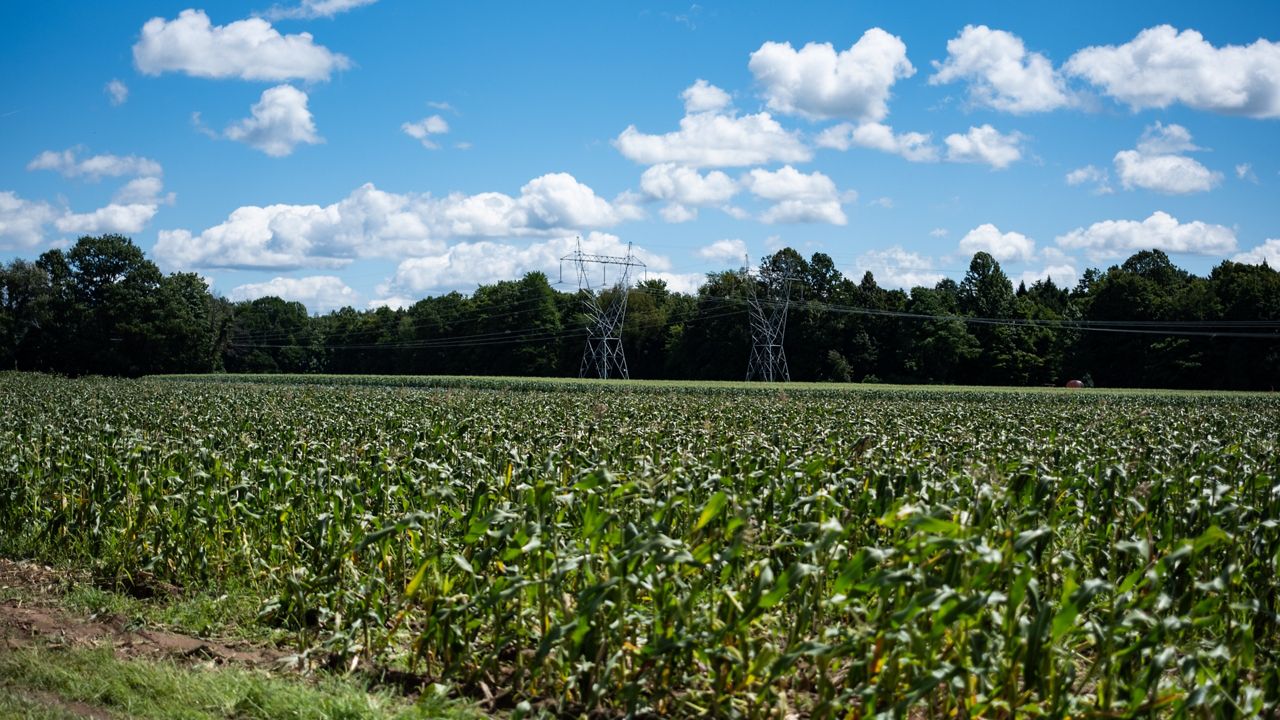OHIO — Ohio has brought in 500,000 new acres to the state’s H2Ohio initiative, according to a press release, reaching a total of 2.2 million acres now enrolled.
The initiative was launched in 2019 and is meant to improve water quality by reducing algal blooms, stopping pollution and improving clean drinking water access “by supporting best farming practices, road salt runoff reduction, litter cleanup, dam removal, land conservation, and water infrastructure revitalization.”
“Since the very beginning of H2Ohio, farmers have shown that they are dedicated to our mission and that they want to be part of the solution for better water quality," Gov. Mike DeWine said in the release. "H2Ohio has been firmly established in northwest Ohio, and so it was important to expand on this progress and offer the program to farmers in the rest of the state."

The release states that while the incentives were initially only available in northwest Ohio in the Western Lake Erie Basin (WLEB) the initiative was expanded statewide in April. Those 500,000 acres comes from outside the WLEB and are made up of 525 producers in 51 counties.
“Time and time again, Ohio farmers continue to demonstrate their dedication to conserving our most precious resource,” ODA Director Brian Baldridge said in the release. “In order provide quality and quantity crop yields to feed Ohio’s families, farmers must have healthy soil and clean water. H2Ohio is directly connected to that effort, and we are thrilled to see the tremendous support from producers across the rest of the state.”
The producers now enrolled in H2Ohio will create and use a Voluntary Nutrient Management Plan. The producers and others in the agricultural field are working with local soil and water conservation districts to develop these management plans for which the release states the producers are incentivized for along with "overwintering cover crops, manure incorporation and utilization, and subsurface phosphorus application."





